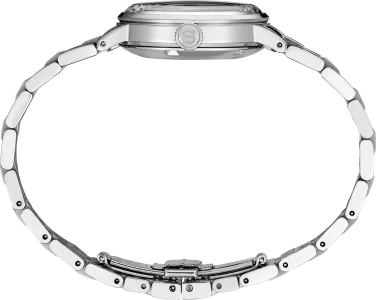Seiko Watches The Japanese Timekeeping Pioneer

When it comes to precision, innovation, and timeless style, few names resonate as strongly in the world of horology as Seiko. Founded in 1881 by Kintarō Hattori, Seiko has grown from a modest Tokyo-based watch and jewelry shop into one of the most respected and technologically advanced watch manufacturers in the world. The brand has played a pivotal role in shaping the Seiko Coutura global watch industry, earning a reputation for trailblazing advancements and affordable luxury.
Humble Beginnings to Global Impact
Seiko's story began when Hattori opened a shop selling and repairing clocks in Tokyo’s Ginza district. In 1892, he launched the Seikosha factory, producing wall clocks and later pocket watches. The word “Seikosha” translates to “House of Exquisite Workmanship,” a fitting name that foretold the company’s future.
In 1913, Seiko released Japan’s first wristwatch, the Laurel. Though only a few dozen were produced daily, this marked a turning point for Japanese watchmaking. Over the next decades, Seiko continued refining its manufacturing techniques, eventually becoming the symbol of precision and craftsmanship.
The Quartz Revolution
Perhaps the most defining moment in Seiko's history came in 1969, when the company released the Seiko Quartz Astron 35SQ, the world’s first quartz wristwatch. This invention revolutionized timekeeping by offering far greater accuracy than mechanical watches, with a deviation of only a few seconds per month. Quartz technology also allowed for mass production, which drastically reduced costs and made precise watches more accessible to the public.
This technological leap, often referred to as the "Quartz Crisis" by traditional Swiss watchmakers, challenged the dominance of mechanical watchmaking and forced the global industry to innovate or decline. Seiko’s quartz movement became the new standard and reaffirmed Japan’s place in the upper echelons of horology.
Technological Innovation
Seiko has continued to push boundaries beyond quartz. In 1982, it introduced the world’s first TV watch, and in 1988, it debuted the Kinetic watch, which combined the self-winding capabilities of Seiko Watches automatic watches with the precision of quartz. The wearer’s motion charged a battery, eliminating the need for regular battery changes.
Another standout innovation is Spring Drive, launched in 1999. This movement combines mechanical energy with an electronic regulator, resulting in an ultra-smooth glide motion of the second hand and extreme accuracy. Unlike traditional ticking or sweeping seconds, the Spring Drive’s glide motion is unique to Seiko.
A Watch for Every Wrist
One of Seiko’s greatest strengths is its versatility. The brand offers timepieces for virtually every budget and lifestyle—from entry-level Seiko 5 models beloved by first-time collectors, to the ultra-luxurious Grand Seiko line that competes with the likes of Rolex and Omega.
Seiko 5, with its robust design and affordable pricing, has become a gateway for new enthusiasts. Meanwhile, Prospex models cater to professionals and adventure seekers, offering dive watches with ISO certification and rugged durability. For dress watch aficionados, Presage combines mechanical elegance with Japanese artistry, including enamel and porcelain dials.
Grand Seiko, originally a sub-brand launched in 1960, has evolved into a luxury marque in its own right. These watches are crafted with obsessive attention to detail, boasting hand-finished components, high-beat movements, and design inspirations drawn from Japanese nature and aesthetics.
Cultural and Sporting Milestones
Seiko has long been associated with sports and global events. The company was the official timekeeper for the Tokyo 1964 Summer Olympics and has served as the official timer for numerous athletic competitions, including the IAAF World Championships. Seiko’s involvement in sports timekeeping helped shape technologies such as digital stopwatches and quartz timers.
In popular culture, Seiko has had a strong presence as well. Its watches have appeared on the wrists of James Bond (notably Roger Moore in Live and Let Die), Ripley in Alien, and countless other film and television characters, reinforcing its cool, dependable image.
Legacy and the Future
More than a century after its founding, https://seikowatche.com/ Seiko remains a symbol of innovation, reliability, and craftsmanship. Unlike many competitors that outsource production, Seiko is a true manufacture d’horlogerie, producing everything in-house—from movements and cases to crystals and lubricants.
As the watch industry shifts toward sustainability and smart technology, Seiko continues to evolve while respecting its roots. Whether through solar-powered models, Bluetooth-connected watches, or mechanical masterpieces, the brand remains at the forefront of horological excellence.
Seiko’s journey from a small Tokyo shop to a global powerhouse is a testament to its pioneering spirit. With each tick, glide, or hum, Seiko tells more than time—it tells a story of relentless innovation and enduring quality.

- Art
- Causes
- Crafts
- Dance
- Drinks
- Film
- Fitness
- Food
- Games
- Gardening
- Health
- Home
- Literature
- Music
- Networking
- Other
- Party
- Religion
- Shopping
- Sports
- Theater
- Wellness


